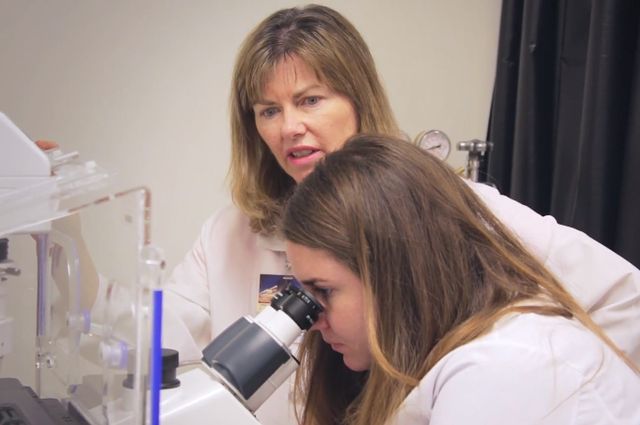It’s a long, hard road to get a medical degree. Longer still if you’re working toward a Ph.D. at the same time. But the end result — becoming a physician-scientist — can lead to an exciting career and an important contribution to medicine.
Most medical schools in the country train their physician-scientists jointly; they pursue their Ph.D. while attending medical school. For 23 years though, UCLA’s Specialty Training and Advanced Research (STAR) Program has taken a different approach. After completing their four years at the David Geffen School of Medicine at UCLA, students in the STAR Program then receive funding and are allowed the time to work on their Ph.D.s while serving in their residencies.
Now a new study that tracked all 123 graduates from the first 20 years of the STAR Program (through 2013) has shown the success of the program. More than 80 percent of graduates were conducting research in academic or biotechnology careers and 71 percent had academic appointments.
The study appears in the February issue of the Journal of Graduate Medical Education.
“This is the kind of success rate we felt the STAR program would achieve, simply from the feedback we’ve received over the years from our graduates,” said Dr. Linda Demer, a professor of medicine, physiology and bioengineering and senior author of the study.
Demer, who is executive director of the STAR Program and the executive vice chair of the department of medicine, said that there’s a disadvantage to completing a doctoral program during medical school and before starting one’s residency.
“During the next eight years of intense clinical training the research is put aside,” Demer said, “so that when it’s time to apply for a grant or a faculty position based on research expertise, that expertise may be obsolete.”
When the UCLA department of medicine initiated the STAR Program in 1993, Demer recalled, academic leaders doubted that any trainees would be willing to spend more time in training, but the program has gone on to receive about 80 applications each year.
The program offers the opportunity to combine clinical specialty or subspecialty training with formal, advanced research training leading to a graduate degree, usually a Ph.D., in coordination with the clinical training.
“The breadth of training in medical school provides a clinical perspective that, in turn, complements the depth of their research training,” said Dr. Mitchell Wong, a professor of medicine at the Geffen School and first author on the study. “That provides a foundation that can result in scientific discoveries that can be translated into improved clinical care.”
Using a combination of reading curricula vitae, in-person and phone interviews and online confirmation Wong, Demer and their colleagues collected data on the career outcomes for 123 physicians who graduated from the program during its first 20 years. Study outcomes included employment in academic research and non-academic research, clinical positions in academic and private practice settings, and research grant funding. The study found that 60 individuals (49 percent) had received career development awards, and 23 people (19 percent) had received grants from the National Institutes of Health.
“These are robust findings,” said Wong, who is also co-director of the STAR Program. Wong noted that many of the program graduates have become department chairs and vice chairs, chiefs and co-chiefs of divisions, directors of research institutes, and one has even become a unit chief at the NIH.
“It’s clear this approach, of integrating graduate degree research into advanced clinical training, is an effective way to prepare trainees for lasting careers as physician-scientists,” he said.
One physician-scientist who benefited from the STAR program is Dr. Fola May, who graduated in 2015 and is now a UCLA assistant professor of medicine in the division of digestive diseases at the Geffen School of Medicine, staff physician at the Veterans Affairs Greater Los Angeles Healthcare System, and co-director of the Global Health Education Program at the UCLA Center for World Health.
“One challenge for students beginning medical school is that it’s often too early to know if they want to be research scientists,” she said. “They often don’t know as well what aspect of science they are interested in dedicating a career to. So if you realize a few years later that you want to pursue research, you’ve missed that boat and there are few opportunities to get a Ph.D.
May said that she didn’t have a good sense of what a career in research would look like when she was in medical school, but during her medical residency realized she wanted to do research as well.
“I was fortunate to enter the STAR program at the same time as my fellowship in gastroenterology,” May said.
Now, in addition to her clinical responsibilities, May is researching challenges in access to preventive services both nationally and internationally, promoting community engagement in health, and patient education.
Other authors on the STAR study included Lourdes Guerrero, Tamer Sallam, Joy Frank, and Alan Fogelman, all of UCLA. The STAR Program is partly funded by a National Institutes of Health Ruth L. Kirschstein Institutional National Research Service Awards grant. The study was sponsored by intramural departmental funds.





